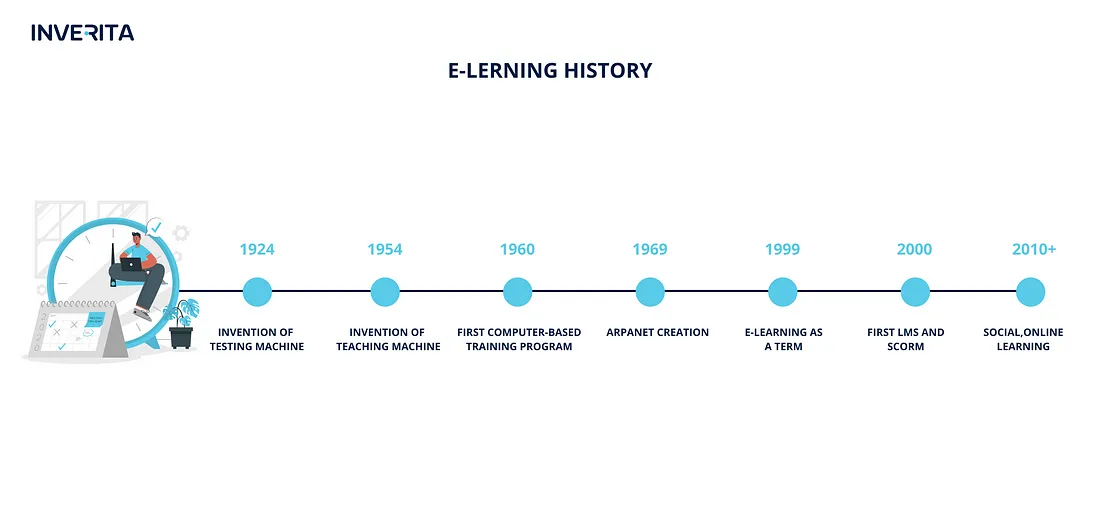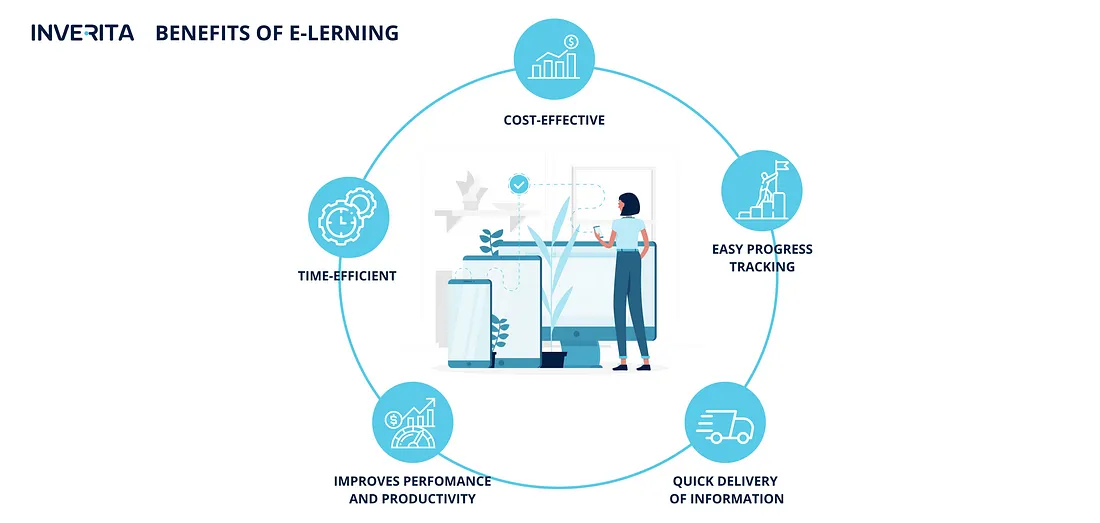Time-efficiency
Students or employees can access the content whenever they need it an unlimited number of times. This especially comes in handy when one needs to revise before an exam or test. Contrary to traditional learning there is no need to wait for a scheduled class or waste time on commuting, once you need - you learn. For employers, E-Learning also saves a considerable amount of time on implementing changes to training content or reprinting. They can immediately add changes to LMS and employees may start their training. Not to mention, that the majority of tasks can be checked automatically. The study shows that E-learning requires up to 60% less employee time than learning the same material in the classroom.
Cost-effectiveness
Compared to traditional learning, E-learning is much more cost-effective. The main reason for this is that online learning happens fast and easily. Teachers or trainers don’t spend so much explaining the material and checking tests, organizations don’t spend on course materials and accommodation. This helps organizations and educational institutions significantly cut down their costs. Plus, students and employees also save on commuting or paying rent if they live in another city. According to research, IBM saved approximately $20 million after switching to E-learning.
Better Performance and Productivity
As learners have the ability to access materials any time and any place, it brings them greater flexibility and convenience which consequently results in significantly improved performance. Students and employees feel more motivated to accomplish their learning and training goals as they can adjust the learning process to the time of the day when they feel the most productive. They also don’t get under the pressure of meeting very tough deadlines and associate learning more with self-improvement and joy rather than with just a responsibility. It has been researched that with the help of E-learning participants learn 5 times more material compared to traditional learning.
Some Examples of E-learning Application
After spending hours watching presentations of each business department, Toyota Motor Europe decided to cooperate with an E-learning vendor and create a first-person interactive video onboarding tour. This way, new employees through this integrated approach of using videos and quizzes can understand how different functions of the business operate together.
Tesco launched a mandatory compliance campaign that takes place every year to check if their employees are up to the minute with strict regulations in the grocery industry. Through Learning Leap they present different quizzes with a gamified leader board to drive participation.
Elucidat is a versatile learning platform that enables the easy production of business training materials. It features a page template editor that allows one to select a theme based on their business preferences. You can add text, images, and videos just using the drag-and-drop principle.
Docebo is a popular LMS platform used mostly for formal learning. The platform is highly customizable and user-friendly, therefore, widely used by students to interact among themselves. Teachers can also assign extra training for students who need extra practice.
Final Note
The traditional “chalk and board” approach no longer meets the needs of educational institutions and enterprises. What is more, students and employees seek easier, more entertaining, effective, and accessible methods of learning. 2020 pandemics made us face the inevitability of shifting from traditional education earlier than we expected. Though if we turn around we’ll see that for a big part of the world it’s already become a new reality rather than a part of a sci-fi movie.
In inVerita we take big importance in the education of our employees and helping others to educate too. If you’re looking for a partner to develop an E-learning solution, you can directly address us. 






_1764586939-small.webp)
